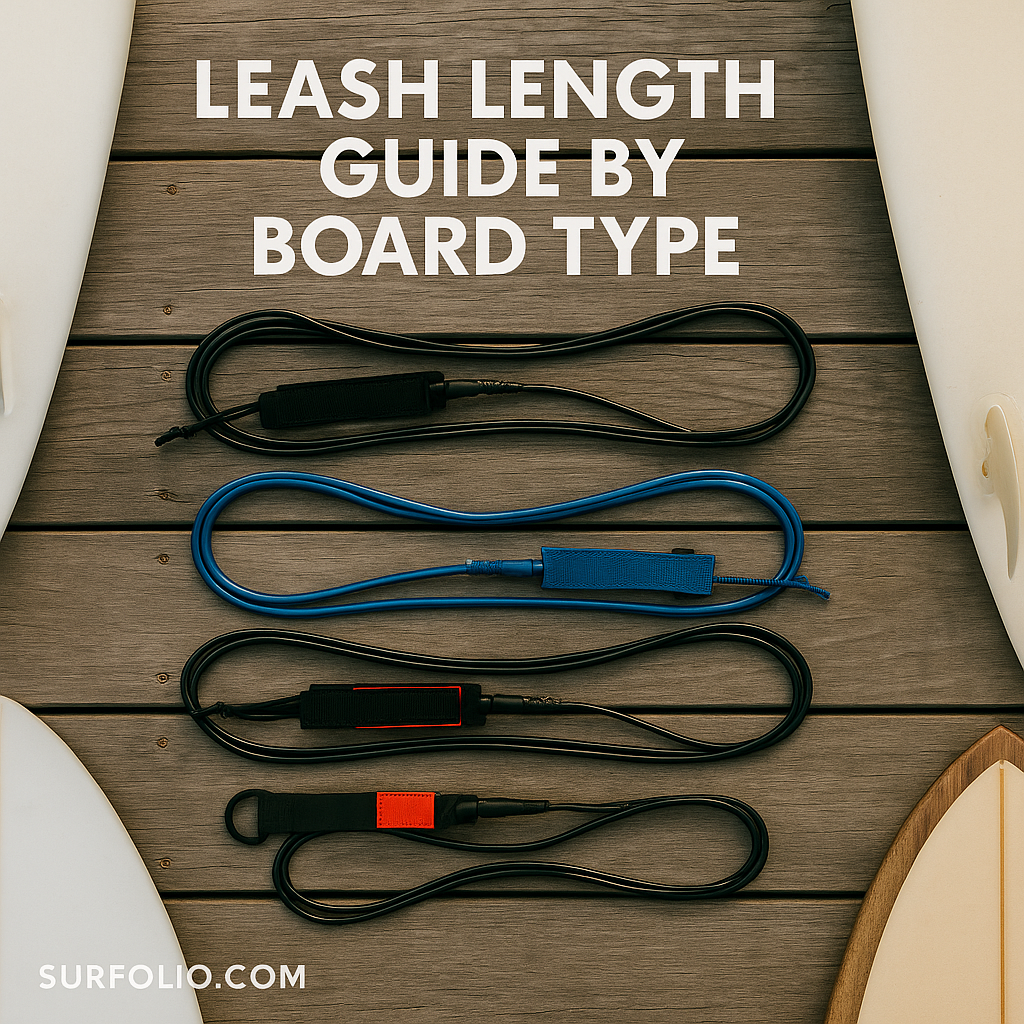
Your surfboard leash is more than a tether—it’s your lifeline. It keeps your board close after a wipeout, prevents collisions, and saves energy during long sessions. But the right leash length depends on your board size, style, and surf conditions. Too short, and your board snaps back at you. Too long, and it tangles or drags.
Here’s how to pick the perfect leash for your setup.
1. The Golden Rule: Match Leash Length to Board Length
The general rule for leash length is simple:
➡️ Your leash should be about the same length as your surfboard.
| Board Length | Ideal Leash Length |
|---|---|
| 5’0”–6’0” | 6 ft |
| 6’1”–6’6” | 6–7 ft |
| 6’7”–7’6” | 7 ft |
| 7’7”–8’6” | 8 ft |
| 8’7”–9’6” | 9 ft |
| 9’7”+ | 10 ft or longer |
This ensures enough distance between you and your board after a fall, without adding unnecessary drag.
2. Shortboard Leashes (5–7 ft)
Best For: High-performance shortboards and small to medium waves.
- Length: Usually 6 ft.
- Thickness: 5–6 mm (thin for reduced drag).
- Why It Works: Short, lightweight, and ideal for quick turns and maneuvers.
Pro Tip: For contests or clean conditions, go slightly shorter (5’6”). For heavier waves, use a thicker 6–7 ft leash for extra strength.
3. Funboard and Hybrid Leashes (7 ft)
Best For: Mid-length and hybrid boards (6’8”–8’0”).
- Length: 7 ft is the sweet spot.
- Thickness: 6–7 mm for durability.
- Why It Works: Gives just enough length for safety while maintaining responsiveness.
Funboard riders need balance—a leash that won’t tangle during cutbacks but still offers distance during wipeouts.
4. Longboard Leashes (9–10 ft)
Best For: Traditional longboards, logs, and noseriders.
- Length: 9–10 ft (always longer than shorter boards).
- Thickness: 7–8 mm for strength and less stretch.
- Why It Works: Keeps the board at a safe distance during wipeouts and allows for smooth cross-stepping.
Tip: Attach your leash to the ankle for modern longboarding or to the knee for traditional noseriding—it keeps the cord out of your way while walking the board.
5. Big Wave Leashes (10–12 ft)
Best For: Guns and step-ups for waves 10 ft+.
- Length: 10–12 ft with a thicker cord (8–9 mm).
- Why It Works: Extra length and thickness reduce recoil and breakage in heavy surf.
Always use a high-quality swivel and double-wrap Velcro cuff to prevent failure when it matters most.
6. Grom and Soft-Top Leashes
Best For: Kids and beginners using foam boards.
- Length: 6 ft (for boards around 5–6 ft).
- Thickness: 5–6 mm for safety and comfort.
- Why It Works: Keeps the leash manageable without excessive drag for smaller riders.
7. Wave Conditions Matter Too
Adjust your leash size slightly based on the surf:
- Small, clean waves: Shorter, thinner leash (less drag).
- Big, powerful waves: Longer, thicker leash (more safety).
If you’re unsure, always size up—a little extra length is better than too short.
8. Maintenance Tips for Longer Leash Life
- Rinse with fresh water after every session.
- Avoid leaving your leash in direct sunlight or hot cars.
- Check for nicks, stretched cords, or rusted swivels regularly.
- Replace your leash every 6–12 months, depending on usage.
A worn-out leash is one of the most common causes of lost boards.
Final Thoughts
The right leash is your silent safety partner—often overlooked but always critical. Matching it to your board type and surf conditions ensures comfort, control, and confidence in the water.
So next time you wax up your board, double-check your leash setup. Because in surfing, small details make a big difference.
